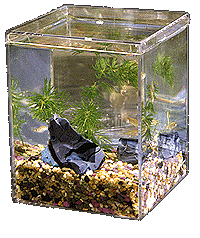weathering

weathering is the process of breaking down rock on Earth’s surface. rocks are broken down into smaller pieces and eventually help to create soil. there are two types of weathering, chemical and mechanical. whats the difference? well, chemical weathering changes the rock's minerals through chemical reactions, like rusting or dissolving, while mechanical weathering breaks rocks into smaller pieces without changing their composition, like freezing and thawing or grinding.
 now that we know the difference, lets go over the different types of weathering.
now that we know the difference, lets go over the different types of weathering.
 first, lets list types of mechanical weathering. mechanical weathering includes frost wedging, exfoliation, abrasion, thermal expansion, root wedging, salt crystallization, and animal activity, all of which break rocks into smaller pieces without changing their chemical composition. frost, root, and salt wedging are the process of these materials getting in the cracks of rocks and expanding them over time.
first, lets list types of mechanical weathering. mechanical weathering includes frost wedging, exfoliation, abrasion, thermal expansion, root wedging, salt crystallization, and animal activity, all of which break rocks into smaller pieces without changing their chemical composition. frost, root, and salt wedging are the process of these materials getting in the cracks of rocks and expanding them over time.
 now, chemical weathering. this is when rocks break down due to chemical reactions with elements like water, oxygen, and acids. one common type involves the reaction of minerals with water, leading to processes such as hydrolysis, where feldspar in granite changes to clay. another type is oxidation, where minerals containing iron, such as olivine, rust when exposed to oxygen and water, forming iron oxides. carbonation occurs when carbon dioxide in the atmosphere dissolves in rainwater, creating carbonic acid that dissolves minerals like limestone. additionally, organic acids produced by plant roots or decaying vegetation can contribute to the breakdown of rocks.
now, chemical weathering. this is when rocks break down due to chemical reactions with elements like water, oxygen, and acids. one common type involves the reaction of minerals with water, leading to processes such as hydrolysis, where feldspar in granite changes to clay. another type is oxidation, where minerals containing iron, such as olivine, rust when exposed to oxygen and water, forming iron oxides. carbonation occurs when carbon dioxide in the atmosphere dissolves in rainwater, creating carbonic acid that dissolves minerals like limestone. additionally, organic acids produced by plant roots or decaying vegetation can contribute to the breakdown of rocks.
erosion
![]() erosion is the process by which rocks, soil, and other surface materials are gradually worn away and transported by natural forces such as wind, water, ice, and gravity. this process can significantly alter landscapes over time, shaping features like mountains, valleys, and coastlines. erosion occurs when these forces break down and move particles from one location to another. in ecosystems, erosion can impact soil quality, affecting plant growth and influencing the balance of organisms that depend on the land.
erosion is the process by which rocks, soil, and other surface materials are gradually worn away and transported by natural forces such as wind, water, ice, and gravity. this process can significantly alter landscapes over time, shaping features like mountains, valleys, and coastlines. erosion occurs when these forces break down and move particles from one location to another. in ecosystems, erosion can impact soil quality, affecting plant growth and influencing the balance of organisms that depend on the land.
 there are many different forms of erosion and how they affect our earths composition.
there are many different forms of erosion and how they affect our earths composition.
 erosion occurs in several forms, each driven by natural forces. water erosion is the most common, where rain, rivers, and ocean waves carry away soil and rocks, creating features like valleys, canyons, and channels. wind erosion happens in dry areas, like deserts, where wind blows loose soil and sand, shaping dunes and exposing rock. ice erosion, or glacial erosion, occurs when glaciers move over land, scraping and grinding rocks, which can form deep valleys and lakes. lastly, gravity erosion, also known as mass wasting, involves the downhill movement of soil and rocks due to gravity, causing landslides or mudslides. each type of erosion contributes to the shaping of Earth's surface and affects the ecosystems that rely on the land.
erosion occurs in several forms, each driven by natural forces. water erosion is the most common, where rain, rivers, and ocean waves carry away soil and rocks, creating features like valleys, canyons, and channels. wind erosion happens in dry areas, like deserts, where wind blows loose soil and sand, shaping dunes and exposing rock. ice erosion, or glacial erosion, occurs when glaciers move over land, scraping and grinding rocks, which can form deep valleys and lakes. lastly, gravity erosion, also known as mass wasting, involves the downhill movement of soil and rocks due to gravity, causing landslides or mudslides. each type of erosion contributes to the shaping of Earth's surface and affects the ecosystems that rely on the land.

deposition
![]() deposition is a process that builds up our earth by gravity, water, wind, and ice. it comes from the word "deposit", which means to put away. this creates landforms, such as deltas, floodplains, and beaches. a delta is a flat piece of land where sediment is deposited at the mouth of the river, and floodplains are the flat area of land next to a river that recieves the overflow of water. beaches are created when deposition in the ocean occurs, the waves bringing sediment up onto the shore, forming sand and dunes.
deposition is a process that builds up our earth by gravity, water, wind, and ice. it comes from the word "deposit", which means to put away. this creates landforms, such as deltas, floodplains, and beaches. a delta is a flat piece of land where sediment is deposited at the mouth of the river, and floodplains are the flat area of land next to a river that recieves the overflow of water. beaches are created when deposition in the ocean occurs, the waves bringing sediment up onto the shore, forming sand and dunes.


summary
gravity
 gravity plays a significant role in the processes of weathering, erosion, and deposition. It is the driving force behind the movement of rocks, soil, and other materials. In weathering, gravity contributes by helping to break down rocks through mechanical forces, such as the downward pull that causes rocks to crack and fragment. Erosion is heavily influenced by gravity, as it causes materials to be transported downhill, whether through the flow of water in rivers, landslides, or rockfalls.
gravity plays a significant role in the processes of weathering, erosion, and deposition. It is the driving force behind the movement of rocks, soil, and other materials. In weathering, gravity contributes by helping to break down rocks through mechanical forces, such as the downward pull that causes rocks to crack and fragment. Erosion is heavily influenced by gravity, as it causes materials to be transported downhill, whether through the flow of water in rivers, landslides, or rockfalls.

gravity also drives the movement of glaciers, which erode the landscape as they move. In deposition, gravity aids in the settling of particles that have been carried away by wind, water, or ice. As these transporting forces lose energy, gravity causes the particles to settle and form layers, creating features like river deltas, sand dunes, and coastal deposits. Thus, gravity is essential in shaping Earth's surface through its impact on the movement and accumulation of materials.
caves
caves are often found near bodies of water, particularly in regions where limestone is prevalent. limestone is a sedimentary rock mainly made of calcium carbonate, formed from the remains of marine organisms or the precipitation of minerals from water. natural forces like acid rain, weathering, and erosion break down the limestone easily, leaving behind harder rock. this process creates features such as sinkholes and caves. inside these caves, you can find remarkable formations like stalactites, which hang from the ceilings, and stalagmites, which grow upward from the floor. these formations are created over thousands of years as mineral-rich water drips and deposits minerals, gradually building up these striking features.
landforms
Weathering, erosion, and deposition work together to shape the Earth's surface, creating a wide variety of landforms. Weathering breaks down rocks into smaller pieces through physical or chemical processes, often forming features like caves. Erosion then transports these materials, carving out dramatic landforms such as canyons, cliffs, and valleys, with rivers or glaciers typically responsible for their formation. Finally, deposition occurs when eroded materials settle in new locations, creating landforms like deltas, beaches, sand dunes, floodplains, and moraines. These interconnected processes continuously reshape the landscape, producing the diverse features we see across the planet.